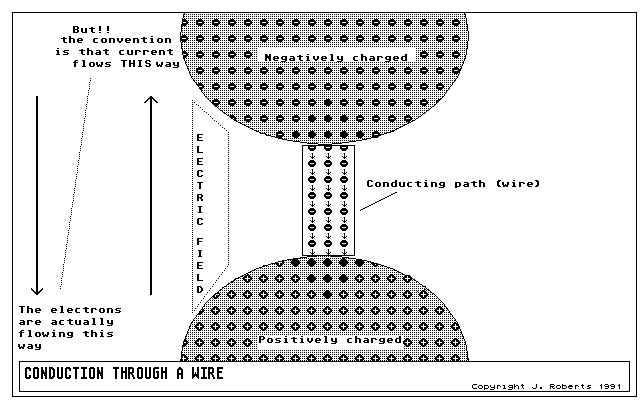 |
Figure 1: here we see the charged spheres from before, with a conducting pathway joining them. What happens? A electric current flows.
|
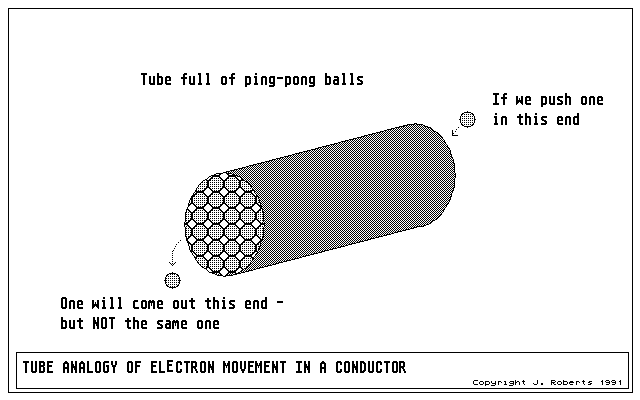 |
Figure 2: an analogy for how electrons can move slowly, yet the ripple of movement travel very much faster. Push a ball in one end of a full tube - and out pops another at the other end. Remember that this is an analogy; electrons aren't ping-pong balls, and more problematically, there's no way to tell one from another...
|
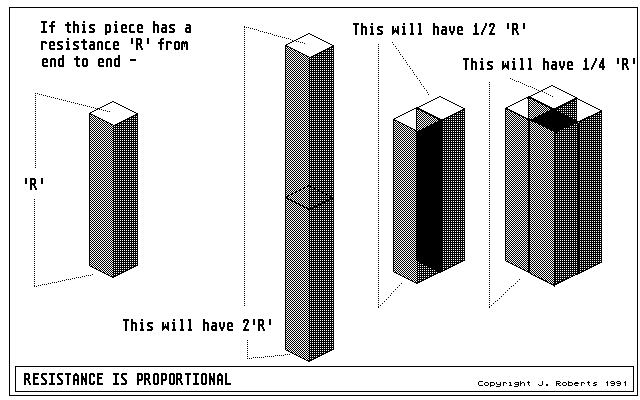 |
Figure 3: resistance is simply proportional (all else being equal) to the quantity of conductor available. Increase the quantity of conductor and reduce the resistance, and vice versa.
|
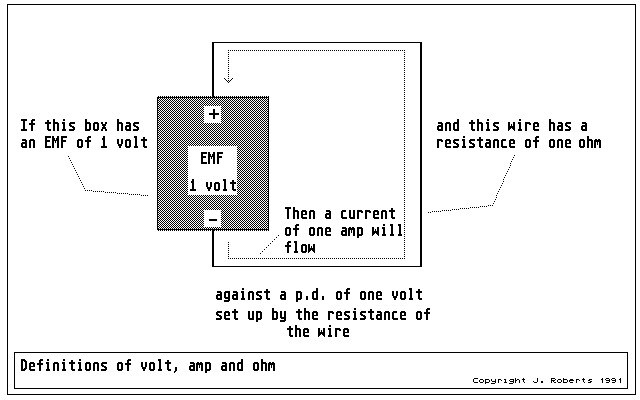 |
Figure 4: the legacy of Mr. Volta, Ampere and Ohm: the volt, amp and ohm.
|
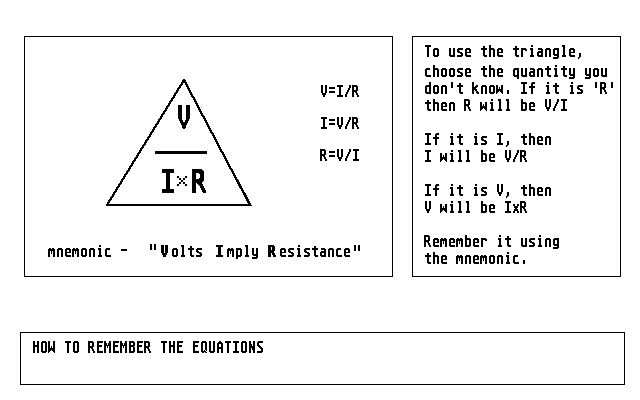 |
Figure 5: a way to remember the equation usually known as "Ohms Law": volts imply resistance.
|
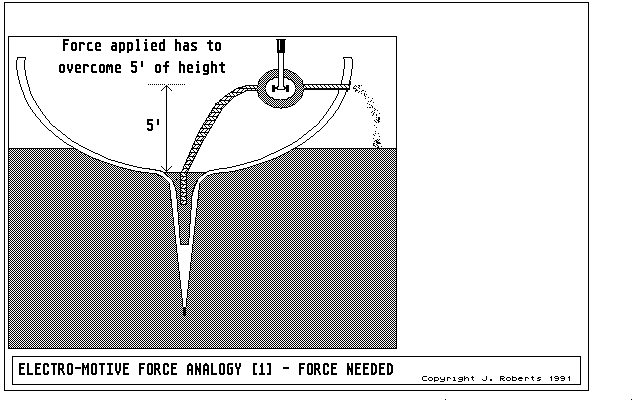 |
Figure 6: electro-motive force compared with water-motive force
|
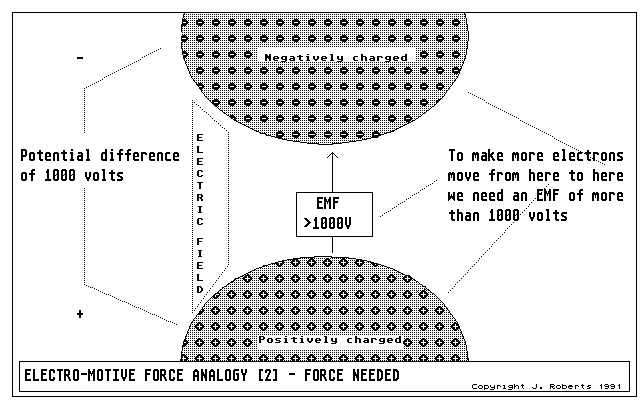 |
Figure 7: the charged conducting spheres; to make electrons travel against a particular pd, we need a larger emf.
|
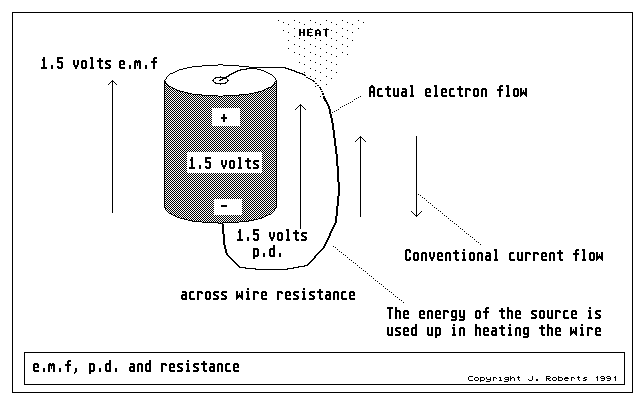 |
Figure 8: an emf with a completed circuit causes a current which generates a pd across the connection
|
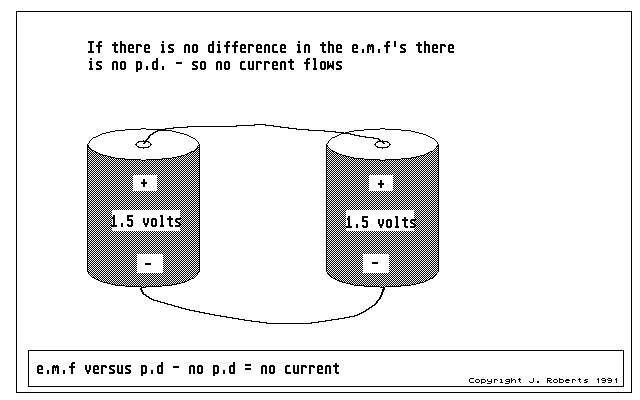 |
Figure 9: emf and pd are rather closely related - no difference in emf means no pd
|
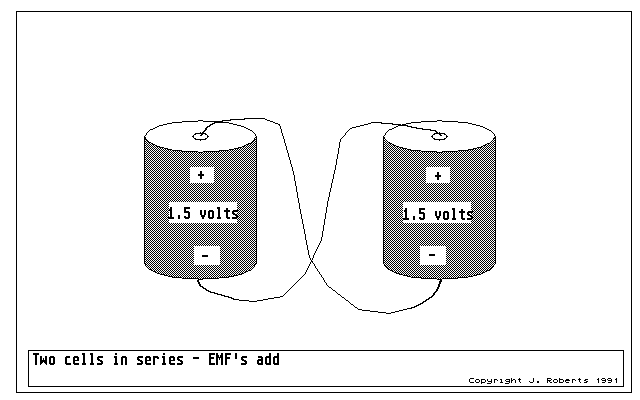 |
Figure 10: emf's can simply add and subtract
|
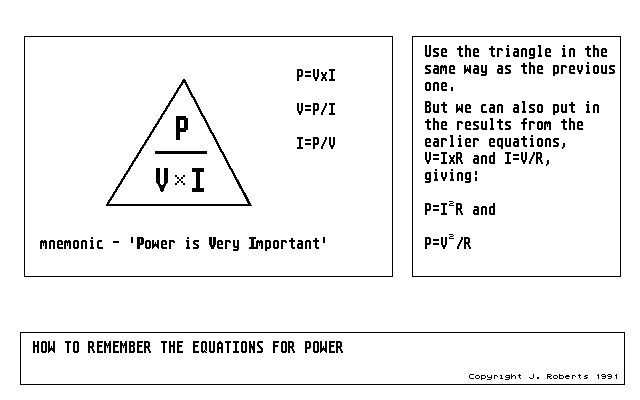 |
Figure 11: the power equation starts out just like Ohm's Law: power is very important
|
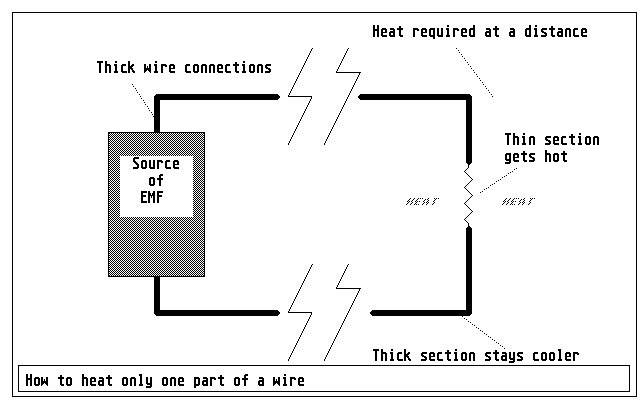 |
Figure 12: by manipulating the characteristics of pieces of wire, we can ensure that the heating effect mostly happens in the place where it's useful to us
|
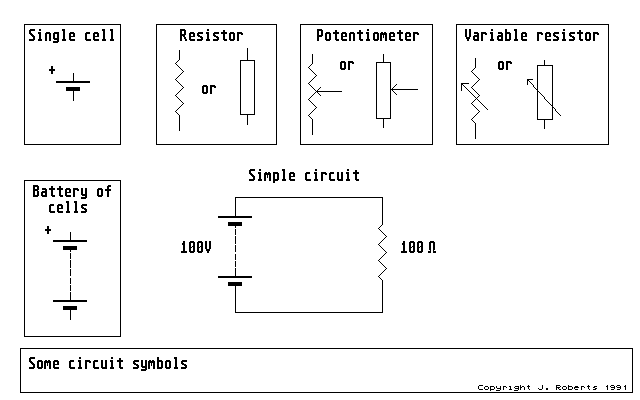 |
Figure 13: representative circuit symbols
|
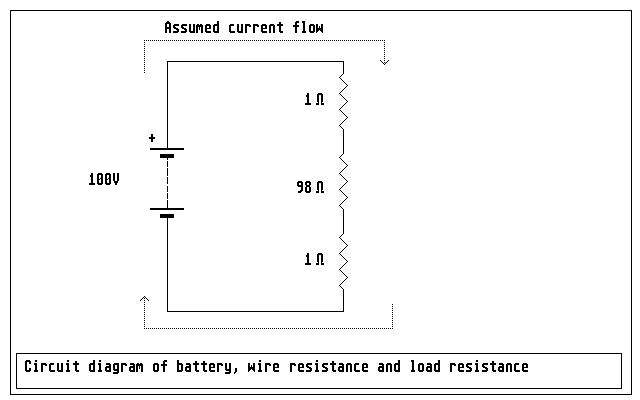 |
Figure 14: a idealised circuit with a battery providing emf with three resitances connected to it
|
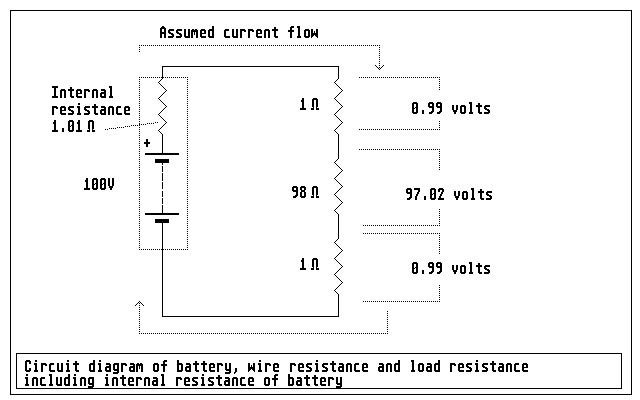 |
Figure 15: a less idealised battery, with its internal resistance included, changes the results
|
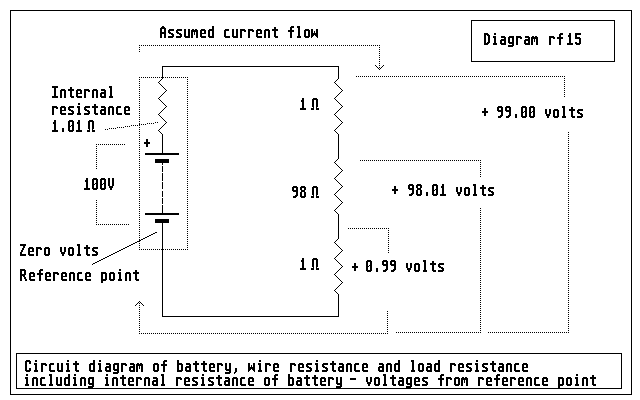 |
Figure 16: voltages can be added and subtracted as long as they are related (or "referred") to the same reference point
|
 |
Figure 17: [a] dividing potential by means of two resistances [b] a "potentiometer" is a resistance with a moving contact - best known as the humble volume control
|
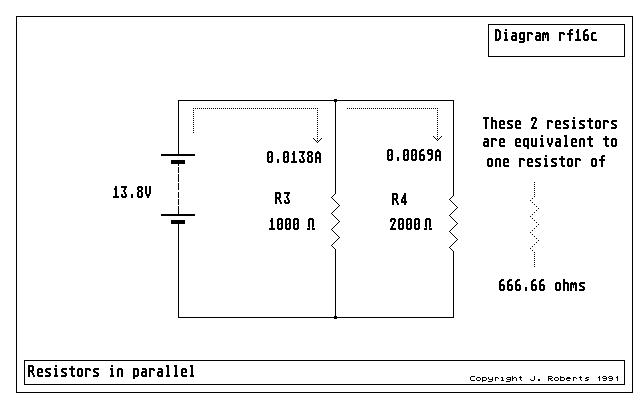 |
Figure 18: two resistances in parallel are equivalent to a smaller resistance
|
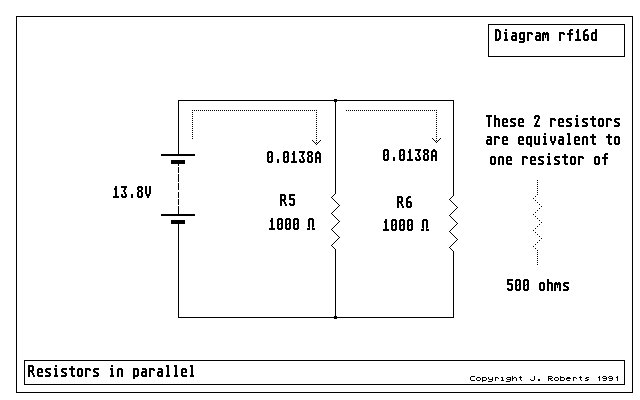 |
Figure 19: two identical resistances in parallel are equivalent to one of exactly half the value
|
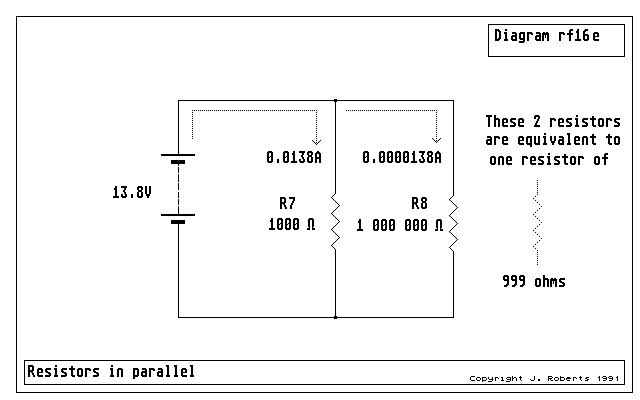 |
Figure 20: a very large resistance in parallel with a small one barely affects the overall value
|
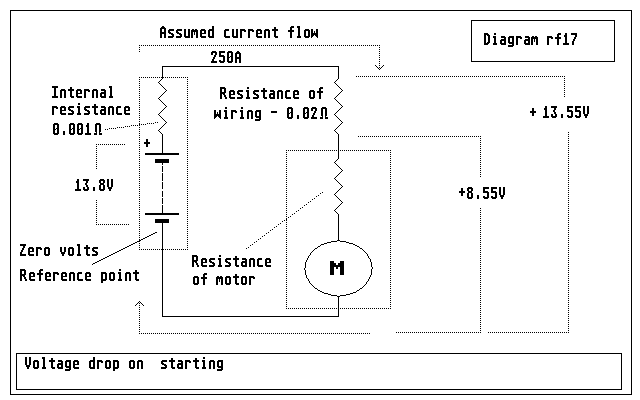 |
Figure 21: getting real: a fairly realistic set of values for the starting motor circuit of an engine
|




















